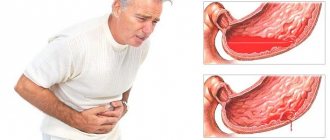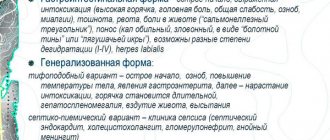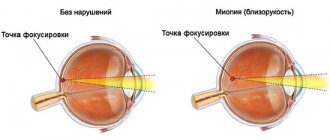20.10.2019
Peptic ulcer is one of the most common and dangerous diseases of the gastrointestinal tract.
An ulcer or peptic ulcer is one of the most common diseases of the gastrointestinal tract. According to statistics, about 4% of the planet's population suffers from the disease, and more than 87 million people were added to their number in 2020 alone. Recently, this disease is rapidly becoming younger and is increasingly found in children and adolescents. Therefore, it is not surprising that young men of military age are very interested in the question of being taken into the army with an ulcer.
An ulcer is a dangerous chronic disease that does not go well with the harsh everyday life of the army. Having such a diagnosis, a person liable for military service can receive one of three categories of fitness - the decision of the medical commission will depend on the severity and stage of the pathology. It is better for a young man to collect the necessary medical documents even before the start of the conscription, because it is on their basis that the medical commission makes its verdict.
However, before discussing the topic “ulcer and army”, a few words should be said about the disease itself, its varieties, causes, clinical picture and characteristics of its course.
What is an ulcer
Peptic ulcer disease or peptic ulcer is a defect in the mucous membrane of an organ caused by the action of digestive enzymes, hydrochloric acid, and bile. The peculiarity of this disease is its relapsing course: frequent exacerbations alternate with long periods of remission. The size of the ulcers varies widely: from a few millimeters to two to three centimeters. They differ from ordinary erosions in the greater depth of the lesion and the ability to penetrate beyond the muscular plate of the membrane. In addition, their healing occurs with the formation of scars.
Today, scientists believe that the main cause of peptic ulcer disease is the bacterium Helicobacter pylori, which disrupts the functioning of the protective systems of the mucous membrane and makes it sensitive to the destructive effects of gastric juice. According to the latest data, Helicobacter infection is the cause of 40% of cases of peptic ulcer. It is not yet entirely clear why the presence of this microorganism does not always lead to an ulcer - it probably has to do with the individual characteristics of the immune system and nonspecific protective factors.
The bacterium Helicobacter pylori is believed to be responsible for most cases of gastric and duodenal ulcers
Another common cause of peptic ulcers is the use of non-steroidal anti-inflammatory drugs (NSAIDs). This is a very popular group of medicines in Russia, which includes such well-known tablets as diclofenac, aspirin, and ibuprofen.
Additional risk factors are smoking, frequent stressful situations, lack of sleep, abuse of coffee, strong alcoholic drinks, and soda. An unbalanced diet with a large amount of concentrates and semi-finished products, excessive consumption of spicy, smoked, salty, fried foods can lead to ulcers. In the pathogenesis of PU, without a doubt, hereditary factors play an important role: 50-60% of children with a similar diagnosis of PU have a family history of PU.
The clinical picture of an ulcer depends on its location, degree and individual characteristics of the patient. As a rule, patients complain of severe pain in the epigastric part of the stomach. In addition, the following symptoms may indicate the development of pathology:
- vomiting and nausea after eating;
- frequent belching with a sour taste;
- painful heartburn;
- loss of appetite and weight;
- increased gas formation and bloating.
An ulcer is fraught with serious complications: bleeding, perforation (perforation) of the wall, obstruction of the pylorus of the stomach, which occurs as a result of inflammation or scarring, and oncology. This disease requires long-term and complex treatment. It includes antimicrobial therapy aimed at completely destroying Helicobacter pylori, as well as taking drugs that reduce the acidity of gastric juice. In addition, patients have to follow a strict diet; they must give up smoking, alcohol, sour, fatty and spicy foods.
Features of diseases
A duodenal ulcer differs from a gastric ulcer in the localization of the site of damage to the body. The location of the duodenum is at the pylorus of the stomach, so the pain that occurs has a certain specificity.
People suffering from stomach ulcers experience pain after eating. They are accompanied by heartburn and nausea, and last for 2-3 hours. In some cases, characteristic symptoms make themselves felt on an empty stomach and before bedtime. In the case of duodenal ulcers, pain occurs on an empty stomach, and is especially pronounced in the morning when waking up after sleep.
Who is taken into the army or fitness categories
The decision on a conscript's suitability for military service is made by a medical commission consisting of seven doctors. She does this on the basis of a government decree containing the so-called Schedule of Diseases - a list of pathologies incompatible with being in the army. Based on the results of a medical examination, each person liable for military service receives a fitness category, which determines his future fate. There are five of them in total:
- "A". It means that the young man is absolutely healthy and can serve in any army, including the elite: special forces, airborne forces, submarine fleet;
- "B". This category is given to those liable for military service who have minor health problems. It imposes restrictions on the choice of type of troops;
- "IN". The category is assigned to conscripts whose health condition does not allow them to undergo military service. They are given a military ID and enlisted in the reserves;
- "G". This category includes young people who have minor health problems - diseases that can be cured relatively quickly. They receive a deferment of six months or a year;
- "D". This category applies to those liable for military service whose condition is incompatible with the army. It completely exempts the young man from military duty.
The category received by a person liable for military service can be appealed in court or to a higher authority.
Confirmation of diagnosis for the military registration and enlistment office
The disease can be confirmed by providing the commission with the results of an endoscopic examination and fluoroscopy. If a stomach or duodenal ulcer was diagnosed long before mobilization, then it is enough to prepare documents based on early examinations. In the event that a pathology is discovered after the summons, then an additional biopsy is performed during the FGDS procedure. In addition, the gastroenterologist recommends an ultrasound scan, and during remission, fibrogastroscopy is additionally performed.
If a conscript who wants to participate in mobilization is concerned about whether he will be accepted into the army with a stomach ulcer, then he has the opportunity to enroll in contract or alternative service. This is possible if the disease is in remission. When an ulcerative defect worsens, the commission, as a rule, prescribes a restriction in service or complete removal from it. Each case is considered individually. A conscript may be offered various options for serving under:
- frequent exacerbations of the disease;
- ulcers more than 2 cm;
- multiple ulcerations.
Do they serve in the army with stomach ulcers?
PUD is fraught with dangerous exacerbations and requires a special diet even during remission. Therefore, people with ulcers are not accepted into the army. Even one scar from a healed ulcer is a good reason for exemption from military service. The disease is covered under Article 58 of the Republic of Belarus. A conscript with a gastrointestinal tract infection can be given one of the following categories: “B”, “D” and “G”.
Category “G” and a six-month deferment are provided in two cases. It is given if the young man first introduced the medical commission to his diagnosis. And also in case of exacerbation of the disease during conscription. After the end of the deferment, a re-examination is carried out, at which the person liable for military service is given one of two categories: “B” or “D”.
This is what the ulcers themselves look like
Most often, conscripts with peptic ulcer disease are assigned category “B”, after which they are sent to the reserves. The list of conditions under which “ulcer sufferers” are issued a military ID with this category can be found in the Schedule of Diseases:
- the presence of regular exacerbations of the disease;
- significant size of ulcerative formations - at least 3 cm;
- extra-bulb ulcer earlier than five years after diagnosis;
- unsatisfactory scarring;
- presence of complications: perforation or bleeding.
Category “D” is given to those liable for military service with the most severe forms of peptic ulcer disease. It is issued in the presence of the following complications:
- frequent and severe bleeding, accompanied by large blood loss;
- absence of part of the stomach or the entire organ;
- deformations of the stomach, leading to serious disorders in its functioning;
- significant dysfunction of the gastrointestinal tract resulting from the development of peptic ulcer.
It is clear that the conscript needs to confirm his diagnosis. To do this, it is better to come to the medical commission with a prepared package of documents containing test results, extracts from the medical record and doctors’ opinions. However, in this case, additional examination cannot be avoided.
How can you confirm an existing diagnosis?
Doctors who are members of the medical commission at the military registration and enlistment office take into account only official documents confirming the conscript’s illness. Since military service far from home for quite a long time will most likely have a negative impact on the nature of a peptic ulcer, care should be taken in advance to obtain such a medical opinion.
In case of an ulcer, to confirm the diagnosis, you will need to undergo diagnostics using fibrogastroduodenoscopy, and this will need to be done twice. The first result is presented to the doctor at the military registration and enlistment office, and the second is for re-examination after the commission of the military registration and enlistment office gives a direction to conduct a confirmatory study. As a rule, this is enough for the military registration and enlistment office to treat the conscript with an understanding of the seriousness of the situation, give him category B and release him from service.
Do they serve in the army with a duodenal ulcer?
The ulcer affects not only the stomach, but also the duodenum (duodenum). Moreover, according to statistics, it is even easier to “earn” this form of the disease than JAB. Men suffer from this disease more often than women.
The etiology and pathogenesis of intestinal ulcers is not much different from peptic ulcers - it occurs due to the aggressive effect of digestive enzymes and acid on the lining of the organ. Doctors associate more than half of the cases of the disease with Helicobacter pylori; less often, the cause of the disease is the use of medications such as aspirin or psychosomatic factors. Dudal ulcers also have a recurrent nature: exacerbations of the pathology alternate with periods of remission.
This is what an ulcerative lesion of the stomach wall looks like
The main symptom of a duodenal ulcer is pain in the upper abdomen. They may worsen after eating spicy foods, alcohol, or prolonged fasting. In addition, this pathology may be accompanied by nausea and vomiting, loss of appetite, bloating and a feeling of heaviness after eating. An intestinal ulcer is dangerous due to its complications, including bleeding and perforation of the wall, which can cause peritonitis.
Duodenal ulcer is a serious and dangerous disease that requires long-term and complex treatment and folk remedies or herbs are definitely not enough. In addition, the patient has to follow a strict diet, more reminiscent of a monastic fast. Therefore, a duodenal ulcer and the army are poorly compatible things, and young people with a similar diagnosis are not accepted into the armed forces. But at the same time, the medical commission can give the patient any of two categories: “B” or “D”. Examination of young men with duodenal ulcers is carried out according to article 58 of the Schedule of Diseases.
Category “D” is assigned in case of serious complications: penetrations or stenoses, as well as with a BMI less than 19 or serious disorders of the digestive system. In addition, this category is assigned if treatment is contraindicated or ineffective.
Category “B” is received by young people in the following cases:
- the ulcer measures two or more centimeters;
- the disease constantly recurs;
- there is significant cicatricial deformation of the intestinal bulb;
- the ulcer does not scar for more than two months.
To receive the “non-conscription” category, a young person must confirm his diagnosis by submitting the relevant medical documents. However, even after this he will be sent for additional examination, based on the results of which the final verdict will be made. The usual diagnostic methods for this disease are: blood test, pH-metry, radiology and endoscopic examination.
Causes and symptoms of peptic ulcer
An ulcer of the stomach and duodenum is characterized by a violation of the integrity of the mucous membrane lining the inner surface of the organ. Men aged 18-40 years are more susceptible to pathology. Ulcerative lesions occur under the influence of unfavorable factors.
The main cause of the ulcerative process is Helicobacter pylor, a bacterium that parasitizes the mucous membrane of the stomach and intestines.
Other negative aspects also influence the development of the pathological process:
- lack of diet;
- frequent stress;
- smoking and alcohol abuse;
- taking certain medications;
- heredity;
- improper eating behavior (spicy food, fast food, soda, etc.);
- past diseases (pancreatitis, tuberculosis, syphilis, diabetes, etc.).
Peptic ulcer disease does not occur immediately. The pathology is preceded by gastritis or duodenitis, which are characterized by abundant release of hydrochloric acid, irritating the mucous membrane. Advanced initial stages of gastritis lead to the formation of ulcers.
Signs of the disease:
- pain in the right hypochondrium;
- heartburn;
- nausea, vomiting;
- loss of appetite;
- flatulence;
- heaviness in the stomach;
- constipation
In addition, the patient develops a grayish coating on the tongue, frequent belching, and increased sweating of the palms. When palpated in the epigastric region, acute pain occurs. With such symptoms, the conscript is sent for examination and the question of whether he will be accepted into the army with an ulcer disappears by itself.
Ulcerative colitis and emergency service: do they take it or not?
Another common gastrointestinal disease is ulcerative colitis (nonspecific ulcerative colitis (UC)). This is a chronic disease of the rectum that can lead to the formation of ulcers.
Symptoms of Ulcerative Colitis
The causes of this disease are unknown. Undoubtedly, hereditary predisposition plays an important role in the development of pathology - the presence of colitis or Crohn's disease in relatives increases the risk of developing the disease - as well as disturbances in the functioning of the immune system. It is possible that external factors have a certain influence on the pathogenesis: viral and bacterial infections, nutrition, bad habits. For example, a correlation between the occurrence of ulcerative colitis and smoking has been proven, and removal of appendicitis at an early age reduces the risk of the disease.
Typical symptoms of UC are:
- frequent (up to twenty times a day) diarrhea with impurities of pus, blood and mucus;
- severe pain in the abdomen - usually in the left half;
- general weakness and lack of appetite;
- aches and pain in the joints;
- with a long course of the disease, a sharp decrease in body weight is observed.
Sometimes the disease is accompanied by redness and swelling of the skin, the appearance of ulcers in the mouth, inflammation of the eyes, fever, and heart rhythm disturbances. The main method of treating the disease is drug therapy, but in severe cases it is necessary to resort to surgery. In addition, both during an exacerbation and during the period of remission, the patient is prescribed a strict diet.
You can often hear a question from parents of conscripts: can their son diagnosed with ulcerative colitis be taken into military service? They can be reassured: people with UC are not accepted into the army - this disease is considered “non-conscriptable”. This disease requires special nutrition, regular medication, and frequent examinations. However, there are nuances here: a young person with a similar diagnosis can receive one of two categories - it all depends on the course of the disease and its severity. Examination of conscripts with ulcerative colitis is carried out according to Article 57 of the Schedule of Diseases.
Category “D” is given to conscripts with a severe form of ulcerative colitis and a chronic course of the disease. To receive this category, a person liable for military service must confirm the chronic form of the pathology by providing the commission with a medical history that would contain examination data, the duration and nature of exacerbations, test results, etc.
Category “B” is reserved for conscripts with a chronic recurrent form of colitis. Again, to confirm the diagnosis, the young man must provide the commission with the necessary medical documents. It is better to leave copies of them at the military registration and enlistment office, and keep the originals with you - this way you can insure yourself against illegal sending to military service. You can also add that the Schedule of Diseases does not stipulate the frequency of exacerbations of ulcerative colitis, so doctors interpret the concept of “chronic” at their own discretion.
Reviews
Dear readers, you can leave your review about stomach ulcers and military service in the comments, your opinion will be useful to other users of the site!
Mark:
Those with peptic ulcer disease should be given an exemption from the army in peacetime and included in the reserves. But our valiant military registration and enlistment office workers can take you even with such a disease. I know many cases when they were drafted into the army with an ulcer, and then a perforated ulcer opened and everything did not end very well.
Vladislav:
I was released with a stomach ulcer, but first they looked at my medical history, and then they sent me to the hospital to confirm the diagnosis. Everything was confirmed there and I was given a white ticket.
What examination does a conscript need to undergo?
If there is a diagnosis of “ulcer,” the army will not be officially contraindicated until the conscript undergoes additional examination, including the following types of diagnostics:
- FGDS;
- X-ray of the stomach with contrast;
- acidity analysis;
- biopsy.
With their help, the presence of damage to the mucous membrane will be determined and the cause of the pathology will be established. If the diagnosis is confirmed, young people are exempt from military conscription.
The doctor will tell you about the symptoms and treatment of ulcers in the video:











